When you begin researching nutrition and seeking to understand which foods are best for you, the term antioxidant starts appearing over and over again. After a while, the word starts to seem like a simple buzzword meaning: healthy!
Because of how popular they are today, every other food product you purchase in the supermarket proudly proclaims on its packaging that it contains healthful antioxidants.
While this may be true, you’re probably starting to wonder if it’s similar to the way the food industry advertises the lack of gluten in their products.
But antioxidants are more than the hype. What they do is pretty special, and the effects they have on the body are seriously beneficial in the fight against free radicals.
What Are Free Radicals?
 Free radicals, one of the core antagonists in the story of your health, are highly reactive chemicals that wreak havoc on the body by creating oxidation, which ages and deteriorates your cells. Antioxidants fight against these free radicals, thereby keeping you healthier and even, to a certain degree, younger too.
Free radicals, one of the core antagonists in the story of your health, are highly reactive chemicals that wreak havoc on the body by creating oxidation, which ages and deteriorates your cells. Antioxidants fight against these free radicals, thereby keeping you healthier and even, to a certain degree, younger too.
When atoms or molecules gain or lose electrons (small negatively charged particles in atoms), free radicals are formed. Normally, they play a role in the everyday cellular processes of your body, but in large concentrations they can become hazardous to the body.
In these large concentrations, free radicals can damage the DNA, which can potentially lead to cancers and other health conditions.
What Causes High Concentrations Of Free Radicals?
 Exposure to environmental toxins or exposure to ionizing radiation can cause the abnormally high levels of free radicals in the body that can lead to cancers and other illnesses.
Exposure to environmental toxins or exposure to ionizing radiation can cause the abnormally high levels of free radicals in the body that can lead to cancers and other illnesses.
When radiation hits the atoms or molecules in your body, electrons can be broken off of the atoms in the process known as oxidation. These are free radicals, literally set free from their bonds.
Toxins like cigarette smoke, metals, and high-oxygen atmospheres can contain high levels of free radicals that infiltrate the body, or stimulate the cells to produce more free radicals.
Oxygen itself is known as a free radical as it’s highly unstable. While we need it to survive, if you were to consume 100 percent oxygen, it would be highly toxic. But oxygen isn’t the only free radical, any molecule can become one. Afterward, it will struggle to gain another electron from its neighboring molecules, creating a vicious cycle.
And yes, free radicals are essential to life for fighting off infection. But, when they start gathering in such large quantities that they pose a threat, it’s necessary to overcome them with high enough levels of antioxidants to make a difference. Luckily, there are plenty of them to go around.
Types of antioxidants
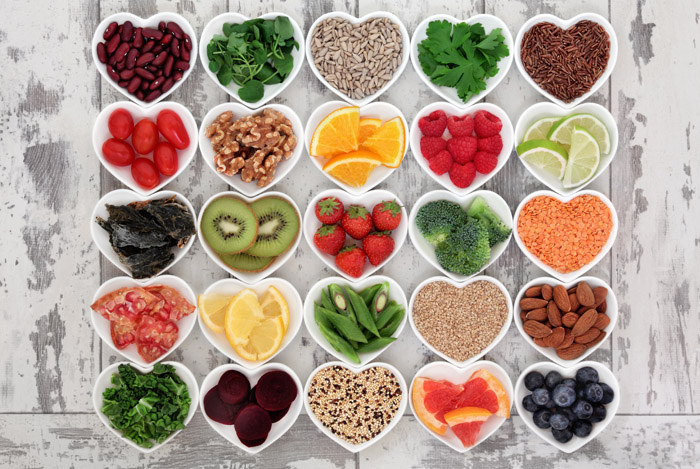 Antioxidants come in a lot of different forms, but some of the more prevalent ones that you’ll see today include:
Antioxidants come in a lot of different forms, but some of the more prevalent ones that you’ll see today include:
- Beta-carotene
- Lutein
- Vitamin A
- Vitamin E
- Vitamin C
- Manganese
- Carotenoids
- Phenols
- Polyphenols
- Phytoestrogens
- Lycopene
- Selenium
These are naturally occurring antioxidants with a wide range of benefits to immune health, helping you to maintain healthy cells throughout the body.
But these are not the only antioxidants. There are hundreds, if not thousands of substances that can demonstrate the same effect at fighting against oxidation of cells. But they don’t all act in exactly the same ways as “electron donors”. Each antioxidant has unique behaviors and properties.
Antioxidant-Rich Foods
Keeping a well-balanced diet, tweaked with foods that contain large levels of antioxidants, shows significant beneficial effects on your health and well-being.
In fact, some studies performed in the 1990s showed that people with lower intakes of fruits and vegetables rich with antioxidants were more susceptible to developing chronic conditions.
So if we want to get more antioxidants, we simply turn to foods for help.
1. Tomatoes
 Tomatoes are some of the more widely known antioxidant-rich foods available. Researchers have found important links between lycopene, the primary antioxidant carotenoid pigment that colors tomatoes, and better bone health.
Tomatoes are some of the more widely known antioxidant-rich foods available. Researchers have found important links between lycopene, the primary antioxidant carotenoid pigment that colors tomatoes, and better bone health.
Besides lycopene, tomatoes are also excellent sources of vitamin C, beta-carotene, the mineral manganese, and vitamin E.
2. Grapes
 Grapes are not only delicious, they’re also a considerably potent source of nutrients. They contain a load of antioxidant phytonutrients like beta-carotene and resveratrol, made popular as one of the key benefits of drinking wine.
Grapes are not only delicious, they’re also a considerably potent source of nutrients. They contain a load of antioxidant phytonutrients like beta-carotene and resveratrol, made popular as one of the key benefits of drinking wine.
Grapes also contain melatonin, vitamin C, and manganese, found in the highest concentrations in the skin and seeds.
3. Walnuts
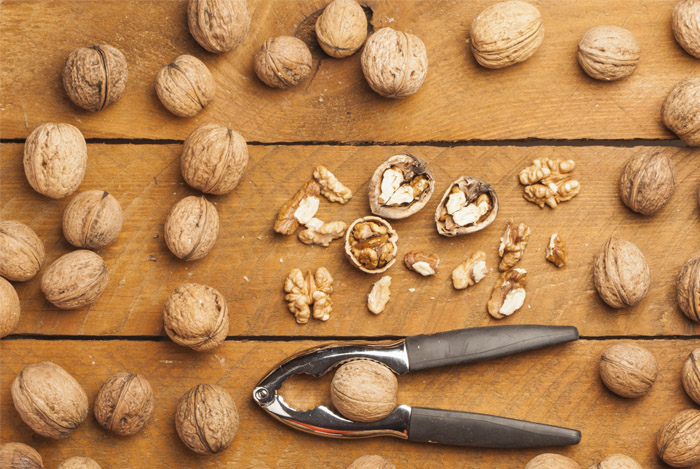 I’ve been seriously digging walnuts lately. Out of all the nuts, walnuts may be at the very top for antioxidant benefits.
I’ve been seriously digging walnuts lately. Out of all the nuts, walnuts may be at the very top for antioxidant benefits.
“A handful of walnuts contains almost twice as much antioxidants as an equivalent amount of any other commonly consumed nut”, said Joe Vinson, PhD. Vinson found that the quality of antioxidants present in walnuts was 2 to 15 times as potent as plain old vitamin E.
Walnuts contain the highest levels of polyphenol antioxidants, raw or roasted, of any nut. So please, eat more walnuts!
4. Oranges
 Oranges are most widely known for their high vitamin C content. Vitamin C is a multifunctional nutrient that helps keep your eyes, teeth, bones, and skin healthy. It also boosts your immune system and aids in the production of antibodies.
Oranges are most widely known for their high vitamin C content. Vitamin C is a multifunctional nutrient that helps keep your eyes, teeth, bones, and skin healthy. It also boosts your immune system and aids in the production of antibodies.
Oranges contain important phytonutrients like flavonoids, carotenoids, and others. Hesperetin is the predominant flavonoid antioxidant found in oranges and lemons alike, and is known to lower cholesterol and have anti-inflammatory, anti-allergic, and anti-carcinogenic benefits.
5. Cranberries
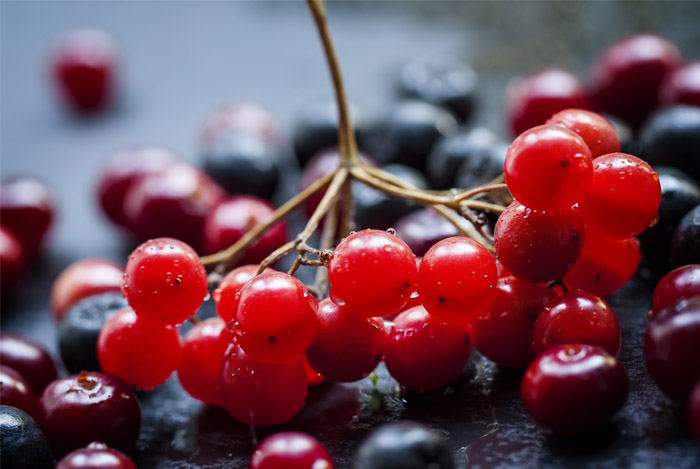 Of course you know cranberries as that gooey stuff that comes out of a can on Thanksgiving, but you probably didn’t know you should be eating them all year.
Of course you know cranberries as that gooey stuff that comes out of a can on Thanksgiving, but you probably didn’t know you should be eating them all year.
Cranberries outrank most every other fruit and vegetable when it comes to antioxidant. A single cup of cranberries has a huge antioxidant capacity, more so than strawberries, spinach, raspberries, and cherries, as well as some other berries and fruits on this list.
6. Cloves
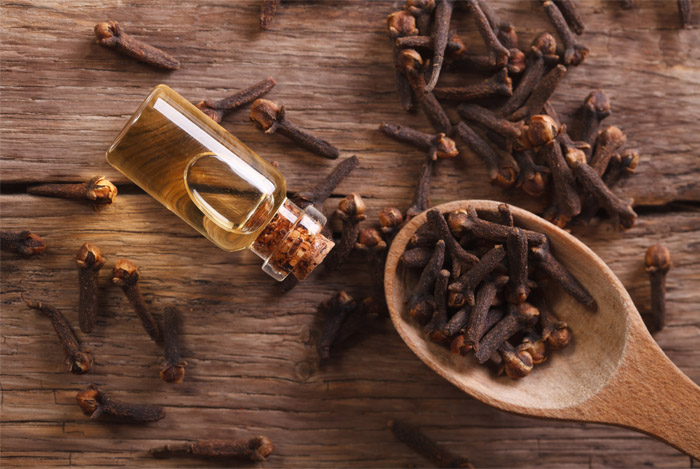 While cloves may be more common in Middle Eastern cooking, they should be included more often in the Western diet due to their high antioxidant content, as well as their use for anti-bacterial, anti-septic, and anti-fungal conditions.
While cloves may be more common in Middle Eastern cooking, they should be included more often in the Western diet due to their high antioxidant content, as well as their use for anti-bacterial, anti-septic, and anti-fungal conditions.
In a Miguel Hernandez University study, cloves were found to have higher concentrations of phenol antioxidants than thyme, rosemary, sage, and oregano.
7. Avocados
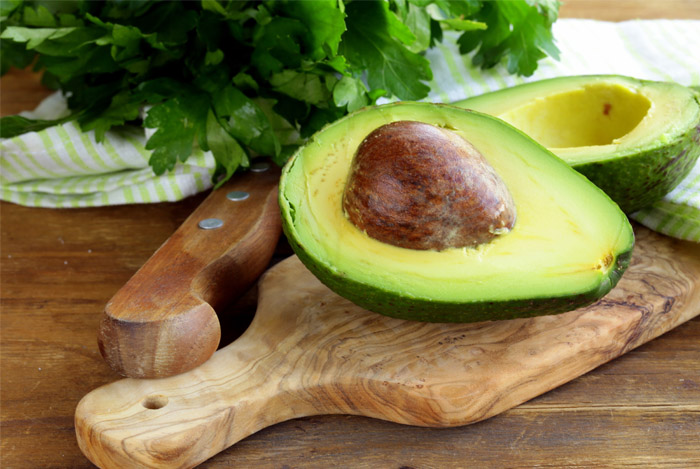 A lot has been said lately in nutrition circles about the awesome health benefits of avocados, so this may be old news to you already. But seriously, the antioxidant content of these delicious fruits is through the roof.
A lot has been said lately in nutrition circles about the awesome health benefits of avocados, so this may be old news to you already. But seriously, the antioxidant content of these delicious fruits is through the roof.
Your ordinary avocado contains beta-carotene, lutein, lycopene, selenium, as well as vitamins A, C, and E. Avocado is ridiculously versatile, so you basically have to make an effort to not include it as part of your diet.
8. Seafood
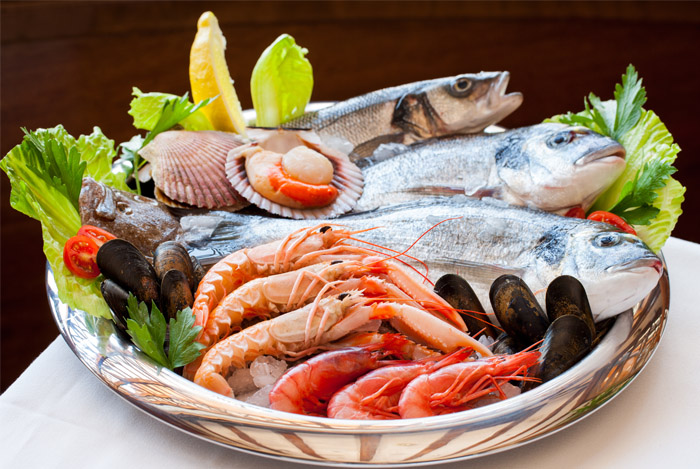 As if you needed another reason to buy more seafood, it turns out the creatures of the deep provide lots of healthful antioxidants.
As if you needed another reason to buy more seafood, it turns out the creatures of the deep provide lots of healthful antioxidants.
Fish and shellfish are full of antioxidants, including copper, manganese, selenium, zinc, and certain zoochemicals, the animal cousins of phytochemicals. So next time you have the opportunity, treat yourself to some delicious and nutritious seafood.
9. Broccoli
 Broccoli is another food I’ve been completely obsessed with lately. For great reason. Like most cruciferous vegetables, broccoli is jam-packed with nutritional benefits, especially when it comes to antioxidants.
Broccoli is another food I’ve been completely obsessed with lately. For great reason. Like most cruciferous vegetables, broccoli is jam-packed with nutritional benefits, especially when it comes to antioxidants.
Broccoli contains the highest source of vitamin C of any leafy green veggie. It also includes vitamin E, zinc, manganese, the flavonoids kaempferol and quercetin, as well as the carotenoids – lutein, zeaxanthin, and beta-carotene.
10. Cabbage
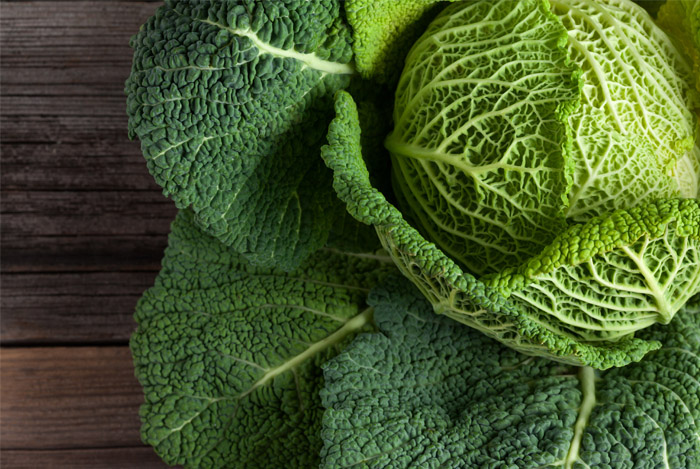 Cabbage is another leafy green cruciferous veggie with a bunch of great health benefits.
Cabbage is another leafy green cruciferous veggie with a bunch of great health benefits.
Cabbage contains 196.5 milligrams of polyphenol antioxidants, including 28.3 milligrams of anthocyanins. Green cabbages are plenty healthy on their own, but red cabbages have six to eight times higher vitamin C than green cabbage, making them almost as wonderful as broccoli.
11. Cinnamon
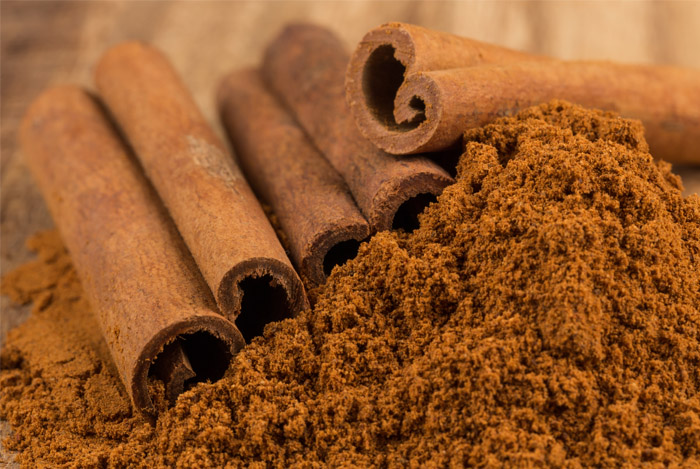 Cinnamon is a seriously stout antioxidant, especially when compared to its sister spices. Six other spices full of antioxidants (ginger, licorice, mint, vanilla, and nutmeg) paled in comparison when it came to cinnamon’s ability to prevent oxidation of cells.
Cinnamon is a seriously stout antioxidant, especially when compared to its sister spices. Six other spices full of antioxidants (ginger, licorice, mint, vanilla, and nutmeg) paled in comparison when it came to cinnamon’s ability to prevent oxidation of cells.
Thanks to its huge levels of polyphenol antioxidants, cinnamon even outranked superfood spices like garlic and oregano.
12. Blueberries
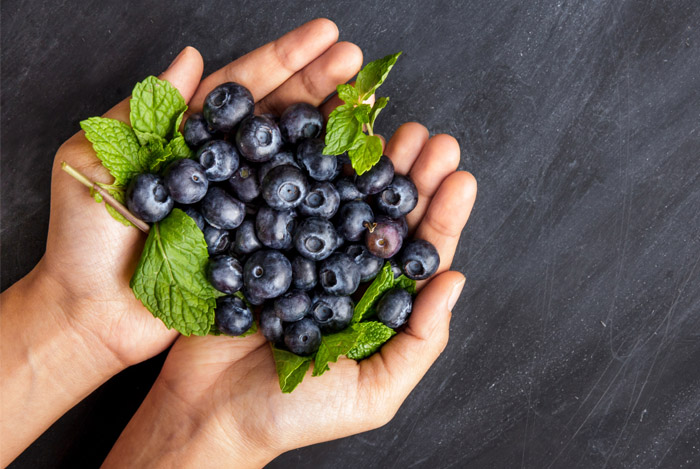 Blueberries often function as a measuring stick for other foods rich in antioxidants, simply because they are so rich in them.
Blueberries often function as a measuring stick for other foods rich in antioxidants, simply because they are so rich in them.
A single cup of wild blueberries contains a total of 13,427 antioxidants, including vitamin C, vitamin A, and lots of flavonoids like querticin and anthocyanidin. That’s the equivalent of 10 times the daily recommended amount.
And according to some studies, mildly steaming blueberries actually enhances the levels of antioxidants they provide, making them more readily available for use in the body at reducing oxidation.
Because berries in general are so high in antioxidants, it’s no wonder health experts recommend you incorporate them into your diet.
13. Plums and Prunes
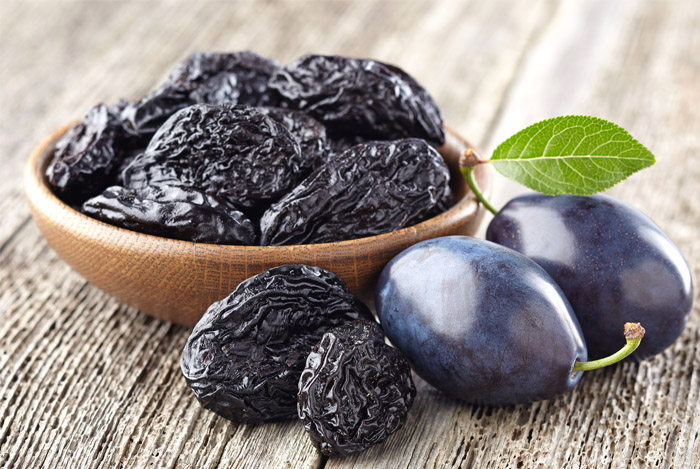 According to a Tufts University study on foods and their total antioxidant capacity, prunes, or dried plums, ranked number one. They contained more than twice the antioxidant capacity as other high ranking foods like blueberries.
According to a Tufts University study on foods and their total antioxidant capacity, prunes, or dried plums, ranked number one. They contained more than twice the antioxidant capacity as other high ranking foods like blueberries.
Prunes and plums contain high concentrations of phytonutrients called neochlorogenic and chlorogenic acid, classified as phenols. They’re especially beneficial in neutralizing a dangerous free radical called “superoxide anion radical”.
Prunes and plums are also full of vitamin C and vitamin A, which strengthen the immune system and help the body more effectively absorb iron.
14. Beans
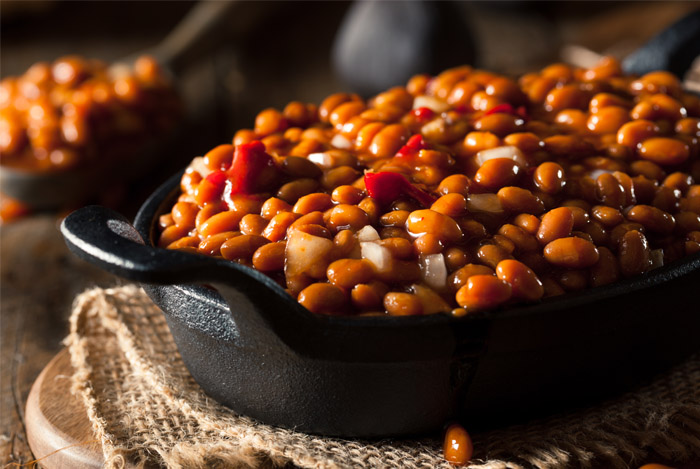 Thanks to their newfound abundance in antioxidant content, the musical fruit has been upgraded to a new status when it comes to health. Red, black, pinto, and kidney beans have all been found to be excellent sources.
Thanks to their newfound abundance in antioxidant content, the musical fruit has been upgraded to a new status when it comes to health. Red, black, pinto, and kidney beans have all been found to be excellent sources.
These beans contain flavonoids, phenols, and a whole host of other important nutrients, marking them even higher than blueberries in antioxidant and nutritional content.
15. Apples
 While everyone knows the saying about apples and doctors, they might not take it quite as seriously as they ought to. Apples are powerful sources of antioxidant flavonoids, and have been linked to weight loss, and as a weapon against cancer and cholesterol.
While everyone knows the saying about apples and doctors, they might not take it quite as seriously as they ought to. Apples are powerful sources of antioxidant flavonoids, and have been linked to weight loss, and as a weapon against cancer and cholesterol.
But while apples come in all different forms, including apple sauce and apple juice, or cooked into a hundred different dishes, to receive the highest amounts of antioxidants, you should just eat them fresh and out of your hand.
Or if you’d like, take some of the other tasty fruits and veggies on here and throw them all into a big antioxidant-rich salad.
In Conclusion
 Tons of research is still being performed every day on the multitude of effects antioxidants have on our health. The foods listed here today are packed with them, but I’m not only recommending them based solely on their antioxidant content – all of these foods would contribute mightily well to any healthy well-balanced diet.
Tons of research is still being performed every day on the multitude of effects antioxidants have on our health. The foods listed here today are packed with them, but I’m not only recommending them based solely on their antioxidant content – all of these foods would contribute mightily well to any healthy well-balanced diet.
If you want a guarantee of receiving the health benefits of these foods, don’t waste any time in incorporating them into your diet! Not only are all of them full of healthful nutrients, they’re also pretty delicious.
What are your favorite antioxidant-rich foods?
The post 15 of the Most Anti-Oxidant Rich Foods & Why We Should Be Eating Them appeared first on Nutrition Secrets.
http://www.nutritionsecrets.com/anti-oxidant-rich-foods/
No comments:
Post a Comment